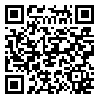Sun, Apr 28, 2024
[Archive]
Volume 14, Issue 1 (1-2024)
Iran J Ped Hematol Oncol 2024, 14(1): 44-52 |
Back to browse issues page
Ethics code: IR.TMI.REC.1400.010
Download citation:
BibTeX | RIS | EndNote | Medlars | ProCite | Reference Manager | RefWorks
Send citation to:



BibTeX | RIS | EndNote | Medlars | ProCite | Reference Manager | RefWorks
Send citation to:
Rezaeeyan H, Yari F, Milani S. The Blood Group Rhc Protein from Human Erythrocyte Membranes as an Immunogen for Producing Antibodies in Mice. Iran J Ped Hematol Oncol 2024; 14 (1) :44-52
URL: http://ijpho.ssu.ac.ir/article-1-818-en.html
URL: http://ijpho.ssu.ac.ir/article-1-818-en.html
Professor of Immunology, Blood Transfusion Research Center, High Institute for Research and Education in Transfusion Medicine.
Abstract: (233 Views)
Background: Various methods have been used to isolate red blood cell (RBC) membrane antigens. In this regard, obtaining the antigen and preserving its structure is of special importance. However, limited studies have been conducted to purify cellular membrane antigens such as Rh proteins.
Materials and Methods: In this experimental study, Rhc antigens of the RBC membrane was purified. Here, the RBC membrane was solubilized through the lysis buffer. Next, dialysis and affinity chromatography were performed using polyclonal anti-human RhCcEe antibody to isolate Rhc/e antigens from the RBCs with the following blood group characteristics: Rhc+, RhC-, Rhe+, and RhE-. The purified proteins were evaluated by sodium dodecyl sulfate-polyacrylamide gel electrophoresis (SDS-PAGE) and dot blot methods. The immunization process was performed in Balb/c mice using the Rhc antigen as an immunogen. After the last injection, the mouse serum was used to titrate antibodies.
Results: Protein bands of the purified antigen were observed in the silver-stained SDS-PAGE gel (region of 25-35 kDa). The OD405nm = 0.56 ± 0.05 results showed the reactivity with Rhc antibody. The specificity of the purified protein was evaluated using the dot blot assay. The anti-sera titration was greater than 1/10,000 against Rhc-coated microwells. Rh antigens can be isolated from the RBC membrane using the non-ionic NP-40 detergent and affinity chromatography.
Conclusion: The Rh antigen can be isolated from the RBC membrane with proper purity by solubilization with the non-ionic NP-40 detergent and purification by affinity chromatography. It seems that the membrane antigen maintains its antigenicity and structure. As a result, it can be detected by blood group-specific antibodies used in the hemagglutination method. Purified antigens may be used to generate antibodies or to study the protein structure.
Materials and Methods: In this experimental study, Rhc antigens of the RBC membrane was purified. Here, the RBC membrane was solubilized through the lysis buffer. Next, dialysis and affinity chromatography were performed using polyclonal anti-human RhCcEe antibody to isolate Rhc/e antigens from the RBCs with the following blood group characteristics: Rhc+, RhC-, Rhe+, and RhE-. The purified proteins were evaluated by sodium dodecyl sulfate-polyacrylamide gel electrophoresis (SDS-PAGE) and dot blot methods. The immunization process was performed in Balb/c mice using the Rhc antigen as an immunogen. After the last injection, the mouse serum was used to titrate antibodies.
Results: Protein bands of the purified antigen were observed in the silver-stained SDS-PAGE gel (region of 25-35 kDa). The OD405nm = 0.56 ± 0.05 results showed the reactivity with Rhc antibody. The specificity of the purified protein was evaluated using the dot blot assay. The anti-sera titration was greater than 1/10,000 against Rhc-coated microwells. Rh antigens can be isolated from the RBC membrane using the non-ionic NP-40 detergent and affinity chromatography.
Conclusion: The Rh antigen can be isolated from the RBC membrane with proper purity by solubilization with the non-ionic NP-40 detergent and purification by affinity chromatography. It seems that the membrane antigen maintains its antigenicity and structure. As a result, it can be detected by blood group-specific antibodies used in the hemagglutination method. Purified antigens may be used to generate antibodies or to study the protein structure.
Type of Study: Research |
Subject:
Hematology
Received: 2023/10/21 | Accepted: 2023/12/14 | Published: 2024/01/20
Received: 2023/10/21 | Accepted: 2023/12/14 | Published: 2024/01/20
Send email to the article author
| Rights and permissions | |
 |
This work is licensed under a Creative Commons Attribution-NonCommercial 4.0 International License. |





